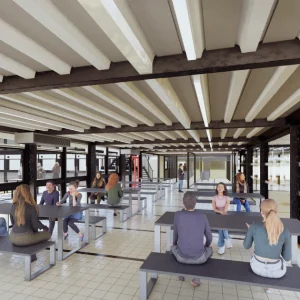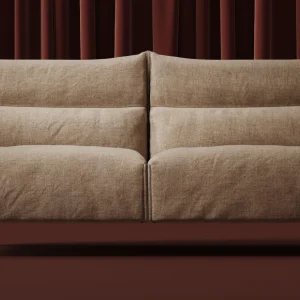The £94 million ($153 million) Olympic velodrome will host the Olympic and Paralympic Track Cycling events in 2012 and has been completed on time and within budget – five years and eight months after London was awarded the Olympic Games. Dubbed as Pringle due to its curving roof that resembles a crisp, the velodrome was built over a period of 23 months.
The distinct velodrome roof of the main 6,000-seat stadium is designed to reflect the geometry of the cycling track, using a lightweight double curving cable net structure. The exterior sweeping curves of the velodrome are clad in cedar wood while 56km of Siberian pine have been used on the heavily banked track inside. Designed by Australian designer Ron Webb, the track also features more than 350,000 nails.
The track has been designed to be the fastest in the world thanks to features including the track geometry plus the temperature and environmental conditions. This allows maximum speed to be taken out of the corners and into the straights, enabling the fastest times. A split air conditioning system has been featured, one for the track and one for the grandstands, to enable the right temperature and air.
The 6,000 seats are split into a lower and upper tier, allowing a 360 degrees concourse level in between, with a continuous ribbon of full height windows. The 360 degree glazed concourse level is designed to offer spectators inside the Velodrome, views out onto the rest of the Olympic Park and across the London skyline. It also enables people outside of the Velodrome views into the venue and down onto the cycling track.
The Velodrome was built by contractor ISG. Besides Hopkins Architects, the design team for the VeloPark constitutes Expedition Engineering, and BDSP who were appointed in 2007 following a design competition judged by leading names from the world of architecture and design.
The lightweight facility has been designed to reflect the efficient design of a bicycle. The strategically positioned rooflights reduces need for artificial lighting, and openings in the external timber cladding of the venue provide natural ventilation. Water saving fittings and collection of rainwater for reuse in building reduces water consumption while compact design minimises energy consumed to heat the main arena.
The main complex also includes a £269 million ($45.1 million) aquatics centre, which will house 17,500 spectators during the Games. The centre is expected to become a 2,500-seat facility after the games. It also features two 50-metre pools and a diving pool.
After the Games, a road cycle circuit and mountain bike course will be added to the Velodrome and BMX circuit to create the Lee Valley VeloPark. The legacy VeloPark will be owned and operated by Lee Valley Regional Park Authority.
Sport England is investing £10.5 million ($17 million) of National Lottery funding in this venue.
The construction of the Velodrome and the legacy VeloPark facilities includes funding from Lee Valley Regional Park Authority (LVRPA), Sport England, Transport for London (TfL), and the London Marathon Charitable Trust (LMCT).





